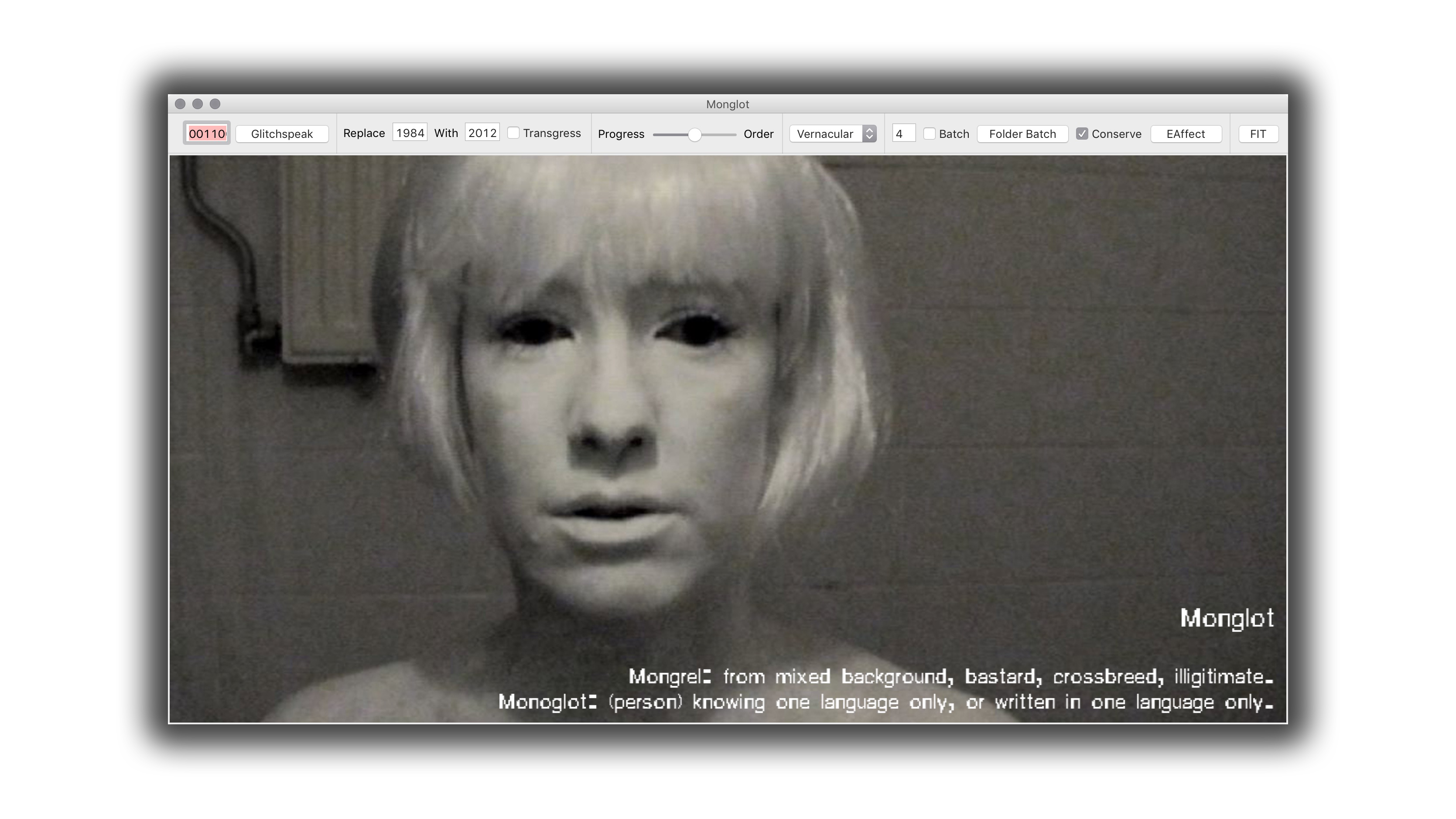
Why make (another) ‘glitch’ software
Realize that the gospel of Glitch Art also tells about new standards implemented by corruption. Not all Glitch Art is progressive or something new. The popularization and cultivation of the avant-garde of mishaps has become predestined and unavoidable. Be aware of easily reproducible glitch effects, automated by softwares and plug-ins. What is now a glitch will become a fashion.**
What I find today in the Glitch Art Flickr pool, are images opposing my original definitions of glitch - a short-lived fault in a system, inducing affect such as surprise or shock - and glitch art - work that makes us critically and radically challenge normative knowledge, values, habits and expectations. Instead, glitch art has become more and more like a style, or even a genre.
While glitch art as a style recalls Homi Bhabhas': "almost the same, but not quite" or “mimicry of digital slippage”, the ‘real’ glitch in glitch art has slowly diminished into a virtual signifier. The by popular culture commodified side of glitch has become a primal part of a new ‘glitch-economy’, which has left me to be believe I should pay more attention to this 'other side of the coin'.
This is why I decided to teach about the materiality of file formats; their different languages, slang or dialects, and how these specific qualities, rules and rhetorics can be exploited as a generative matter to create new images (a practice closely related to databending). I named the workshop "A Vernacular of File Formats" and showed different compression based artworks, while supplying the students with methods and tools to create their own format based research, and possibly art and design.
One of the troubles I ran into during the workshop was that the tools I had were not ideal for such a workshop; with every other file format we set out to manipulate we had to switch softwares, which between the different OSs' on the students computers became a real *pain*.
When I spoke to Johan Larsby (the creator of Swutits) about the lack of software, he proposed a collaboration - which is how the Monglot project started.
︎ Monglot only worked on MacOS 10.5 and 10.6. In 2016 KernelEquinox opensourced a program inspired by Monglot for Windows -> ︎
︎ More about monglot and its strange interface here
︎ Download Monglot, code, Monglot master
︎ Monglot only worked on MacOS 10.5 and 10.6. In 2016 KernelEquinox opensourced a program inspired by Monglot for Windows -> ︎
︎ More about monglot and its strange interface here
︎ Download Monglot, code, Monglot master
Monglot (2011)
A Glitch Software collaboration with Johan Larsby (SE) 2011.
Of Mimicry and Glitch Art: The Ambivalence of a 'Colonial' Glitch Art discourse
(order and progress || chaos and destruction)
The name Monglot is a degeneration of the terms Mongrel and Monoglot (the term also references Homi Bhabha's "forked tongue" of colonialism and something I would like to refer to as Glitch Speak).
*/
Mongrel: the offspring of a variety of species, of mixed background, bastard, or imperfect crossbreed
Mongrel: the offspring of a variety of species, of mixed background, bastard, or imperfect crossbreed
Monoglot: knowing only one language; monolingual.
*/
*/
Generally, glitch aesthetics or compression artifacts such as fragmentation, grain, ghosting, heterodynes, interlacing, jitter, jaggies, (…) posterization, pixelating, quantization error, ringing, staircase noise, scan lines (…) come to the surface because of an accidental flaw in the image data, which shows on the surface of the image itself.
The Monglot software generates glitches. It does this by adding a random or chosen error to the image-data, which is encoded via a compression language of choice. This error than sits on the surface of the image. In doing so Monglot mashes two languages together: the language of the compression and the visual image itself.
While for most glitch softwares the final product is the focus, Monglot focusses on the /experimental/, generative part of glitching.
By comparing different file formats and their behaviors, Monglot can be used to learn and research about file formats.
Monglot aims to show the ambivalence (cool vs. hot) and the double articulation (encoding vs. image data) of (file format-based) Glitch Art.
The user of Monglot is able to repeat an error by clicking ‘Glitchspeak’ or chose a particular error on the ‘Replace’ function of the software. This is how Monglot exists as a compromise in-between cool and hot.
The user of Monglot is able to repeat an error by clicking ‘Glitchspeak’ or chose a particular error on the ‘Replace’ function of the software. This is how Monglot exists as a compromise in-between cool and hot.
